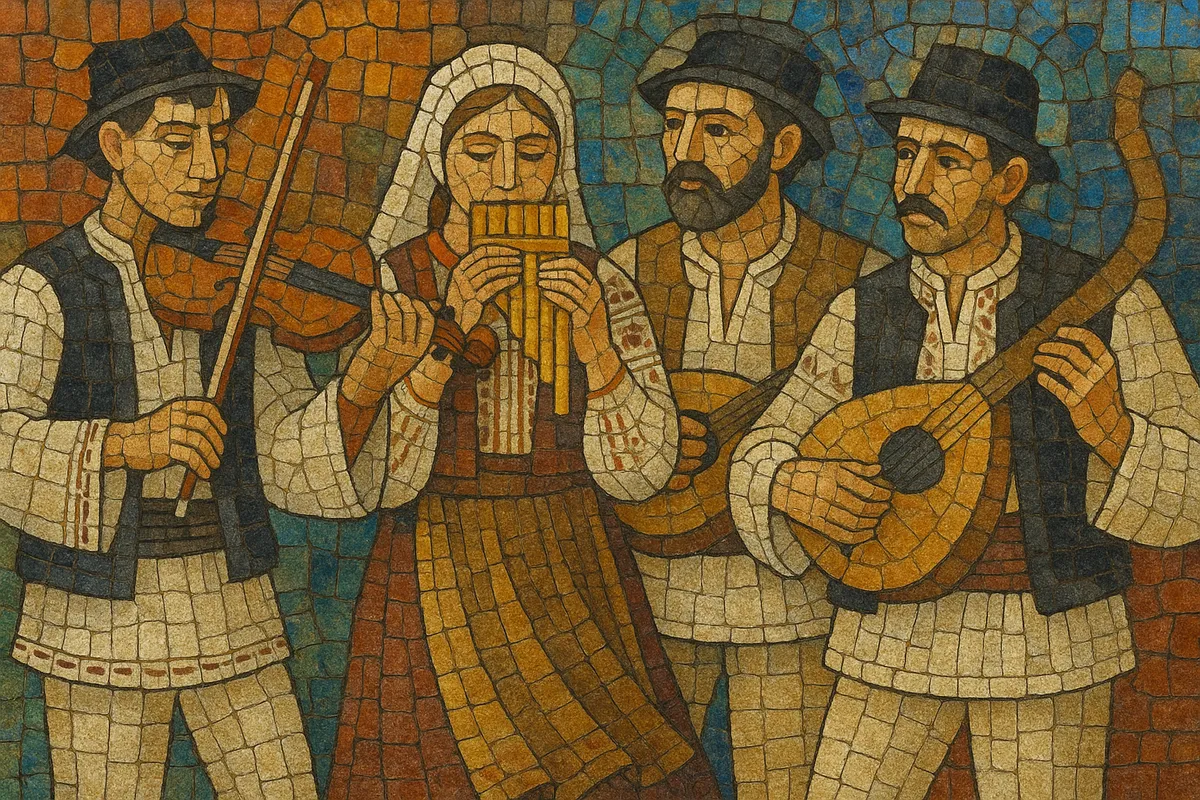Romanian folk music is the traditional music of Romania’s villages and small towns, shaped by pastoral life in the Carpathians, Danubian plains, and the Black Sea region. It features a wide spectrum of vocal and dance forms—from the free-rhythm, melismatic doină to propulsive circle dances such as horă and sârbă—and a performance aesthetic rooted in ornamented melody and heterophonic textures.
Typical ensembles (taraf) combine fiddle (vioară), cobza (a plucked lute), nai (pan flute), ţambal (cimbalom), accordion, clarinet, and sometimes the tárogató (taragot), shepherd flutes, cimpoi (bagpipe), and tulnic (alpenhorn). Modal melodies (often Dorian, Aeolian, and Mixolydian, with occasional augmented seconds) and asymmetric meters (5/8, 7/8, 9/8) are common, especially in Dobrogea and the south. Socially, the music accompanies weddings, seasonal rituals (colinde/carols, Călușari healing/rite dance), and community gatherings, carrying themes of love, nature, heroism (haiduc ballads), humor, and laments.
Romanian folk music has medieval roots and even older pastoral layers, carried orally by peasants and professional lăutari (often Roma musicians). Regional styles crystallized around local dances (horă, sârbă, brâul, băta) and the free-rhythm doină, while instruments adapted to pastoral life and village festivity.
In the 1800s, collectors and composers began to document village repertoires, aligning them with a growing sense of Romanian national identity. Early notations and salon arrangements brought rural tunes into urban salons and theatres, while taraf bands spread regional idioms between provinces.
Between the late 19th and early 20th centuries, ethnomusicologists (later figures include Constantin Brăiloiu) and early recording campaigns fixed key repertoires on paper and disc. The era saw iconic voices emerge in city stages and radio, bridging rural style with urban audiences without losing ornament, heterophony, or dance function.
State ensembles, festivals, and recording institutions professionalized and standardized village repertoires. Folklore was curated for stage—costumes, large orchestrations, and arranged suites—yet local taraf traditions continued at weddings and village events. Radio and vinyl spread regional styles nationwide.
After 1989, field revivals and world-music circulation (e.g., taraf ensembles on international stages) renewed interest in raw village styles. Parallel scenes modernized the idiom (etno-pop, manele with strong lăutar roots), while art and metal groups wove doină modes, meters, and instruments into contemporary forms.


